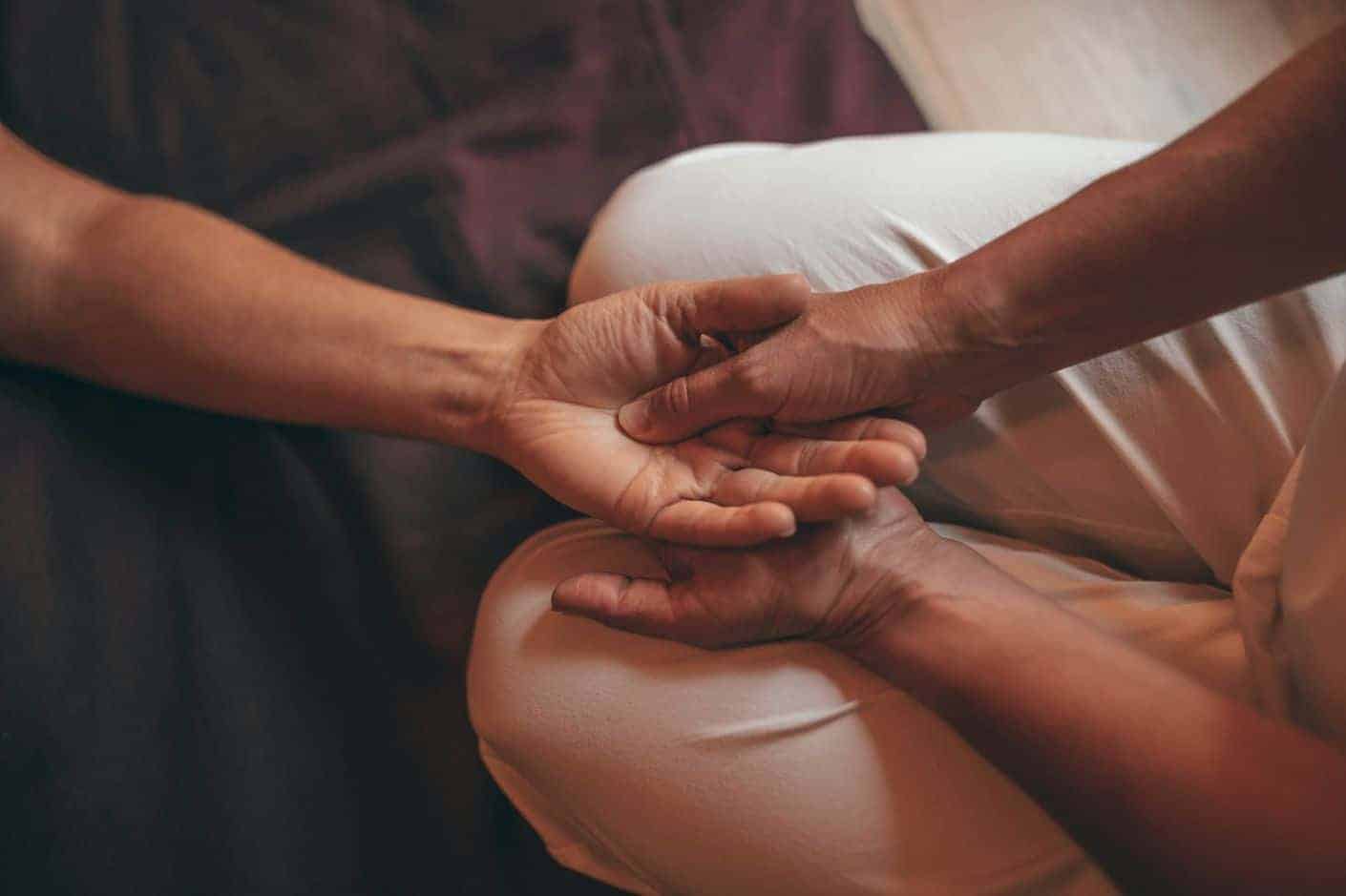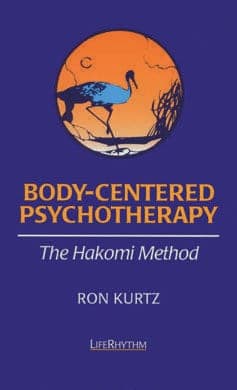Therapy
Hakomi Therapy: Overview and Effectiveness
THC Editorial Team July 14, 2021

Contents
- Overview
- What Is Hakomi Therapy?
- What Is the History of the Hakomi Method?
- What Are the Key Principles of Hakomi Therapy?
- How Does Hakomi Therapy Work?
- Effectiveness of Hakomi Therapy
- Potential Benefits of Hakomi Therapy
What Is Hakomi Therapy?
Hakomi therapy, also known as the Hakomi method, is a mindful, body-centered approach to psychotherapy that uses experiential techniques and somatic awareness to encourage positive individual transformation and growth.1
In this form of experiential therapy, the human body is viewed as a resource to access unconscious materials from formative experiences that have shaped a person’s core memories, beliefs, and psychological outlook.2 In particular, Hakomi therapists believe that unconscious core materials—such as a person’s memories, beliefs, emotions, and perspectives—inform a person’s character and limit their goals.2
In response, Hakomi therapists help people identify physical manifestations of their unconscious beliefs and internal experiences and incorporate those manifestations into conscious awareness to enable personal change. Together, therapists and clients study the client’s facial expressions, gestures, posture, and other somatic expressions to generate insights into the person’s core material; the information from this core exploration is then utilized to challenge and change negative beliefs and facilitate positive transformation.2
What Is the History of the Hakomi Method?
Experimental psychologist Ron Kurtz developed the Hakomi method in the late 1970s and early 1980s to integrate Western and Eastern psychology principles. This form of experiential psychotherapy emphasizes several key concepts and principles of Eastern philosophies, such as empathy, presence, and mindfulness.1
In developing the Hakomi method, Kurtz also incorporated influences from other body-centered therapeutic approaches such as the following:
- Ericksonian hypnosis
- the Feldenkrais method
- gestalt therapy
- neuro-linguistic programming
- psychomotor therapy
- Reichian breathwork
- structural bodywork
The Hakomi Institute.
Together with several other educators and therapists, Kurtz established the Hakomi Institute in 1981 to develop Hakomi therapy methods further.3 Kurtz later established the Hakomi Education Network to provide Hakomi training to practitioners throughout the world. Today, Hakomi therapists can be found in many different countries.
What Are the Key Principles of Hakomi Therapy?
The Hakomi method emphasizes the following five principles:
- mindfulness
- unity
- organicity
- mind–body integration
- nonviolence
Hakomi practitioners rely on mindfulness as a key practice to help clients explore their core material. Through this alert state of relaxation, an individual’s focus is sustained inward while being more aware of what is occurring in the present moment. This mindful state can help reduce distraction and enable the detection of thoughts, emotions, and sensations as they arise in the moment.4
Unity refers to the idea that each person is composed of different systems that must work together for overall health. It also refers to the notion that individuals are connected to and dependent on others. Hakomi practitioners help clients overcome their perceptions of imbalance between themselves and others to achieve a sense of mutuality and presence.2
Through organicity, people are viewed as innately wise and capable of organizing and correcting their systems. Every person is considered to have the capacity to heal and know what is needed for healing. The Hakomi therapist supports the client’s natural self-healing ability.2
Mind–body integration recognizes that the body and mind have ongoing interactions that influence the individual’s core beliefs and perceptions of others and the world. These systems express what the individual experiences at a set point in time through their bodily sensations, actions, and thoughts.4
In the Hakomi approach to therapy, the principle of nonviolence refers to the cooperation between the client and the therapist during the therapeutic process. The Hakomi therapist recognizes defenses as reactions that allow the client to manage their emotional experiences. Instead of challenging a person’s defenses, a therapist will instead offer support to help the client work through them.4
How Does Hakomi Therapy Work?
Hakomi therapy sessions follow a set sequence: contact, access, processing, and integration.5
During the initial contact phase, a safe environment is established, enabling the individual to begin the therapeutic process and open up to a state of mindfulness and allow a potentially healing relationship with the therapist to form. The therapist facilitates this phase by making direct statements about what they observe from the client’s body language (e.g., “I see that your jaw is tense”).6
Once the individual has entered a state of mindfulness, they are encouraged to access core material and become aware of its limits on their daily life. Accessing core material is believed to facilitate the individual’s desire to enact positive change by exploring new choices and options. To help access core material, a Hakomi therapist might ask the client to focus on what is happening internally, physically, and emotionally from one moment to the next. The therapist will encourage the client to focus on memories, feelings, images, or sensations as they enter the client’s present experience.
Hakomi therapists might also use small “experiments” to help the client access their unconscious core material by uncovering their self-beliefs and perceptions about the world. The experiments commonly involve positive statements designed to trigger emotions and sensations that express the client’s core beliefs to assess their reactions. An example of one such statement is “Just notice what happens when you hear a voice that says, ‘It’s OK to relax.’”6
Hakomi therapy might also involve consensual physical contact at this stage, such as the therapist gently placing a hand on the client’s shoulder to provide comfort when the client experiences traumatic memories. Touch might also be used to support an individual’s defenses to delve more deeply into the internal feelings they are experiencing.6
During the processing phase, the client and therapist study the client’s reactions, experiences, and beliefs to understand how they might impact the client’s sense of well-being. The therapist then works with the client to establish new experiences to help them counteract negative beliefs and discover what feels true.6
Toward the end of a Hakomi therapy session, the therapist helps the client integrate everything they experienced during the session and connect those deeper elements of experience to their daily life.6
Effectiveness of Hakomi Therapy
While studies on the efficacy of Hakomi therapy have been relatively limited, some evidence has emerged detailing its usefulness to treat depression. For example, a 2013 study found that participants with moderate depression who underwent a therapeutic approach that included Hakomi therapy experienced improvements in mood, alleviation of depressive symptoms, reduced guilt, reduced insomnia, and reduced anxiety.7
Research has also demonstrated that a body-based therapeutic approach similar to Hakomi therapy can be used to treat women in recovery from trauma related to childhood sexual abuse. Following treatment, participants demonstrated improved physical and psychological well-being and improvements in overall anxiety and depression. The participants retained these benefits at follow-up 3 months after the initial intervention.8
Potential Benefits of Hakomi Therapy
Hakomi therapy might help people achieve lasting changes in their self-perceptions, relationships, and behaviors. It uses experiments in mindfulness and the therapist’s insights to discover and recontextualize a client’s limiting beliefs. Hakomi therapy aims to help people achieve growth through awareness of the core material that shapes their beliefs, emotions, and conscious experiences. When clients experience self-discovery and understand the origins of this core material, they can uproot any trauma-based motivations.2 This state of self-transformation fosters awareness of new ways to experience everyday life and make positive changes.
Hakomi Therapy: Summary and Outlook
The Hakomi method offers an alternative approach to people who are searching for an effective path toward transformation and a sense of wholeness. In particular, it prioritizes somatic experience more than some other types of psychotherapy and views the body as a resource for people to access their core material. Although practitioners have traditionally used Hakomi therapy with people whose incomes are above the federal poverty threshold, using this therapeutic approach in nonprofits and other organizations to reach people in underserved populations is becoming more common.9 This drive might help more people benefit from the Hakomi method to produce enhanced self-awareness and transformative change.















